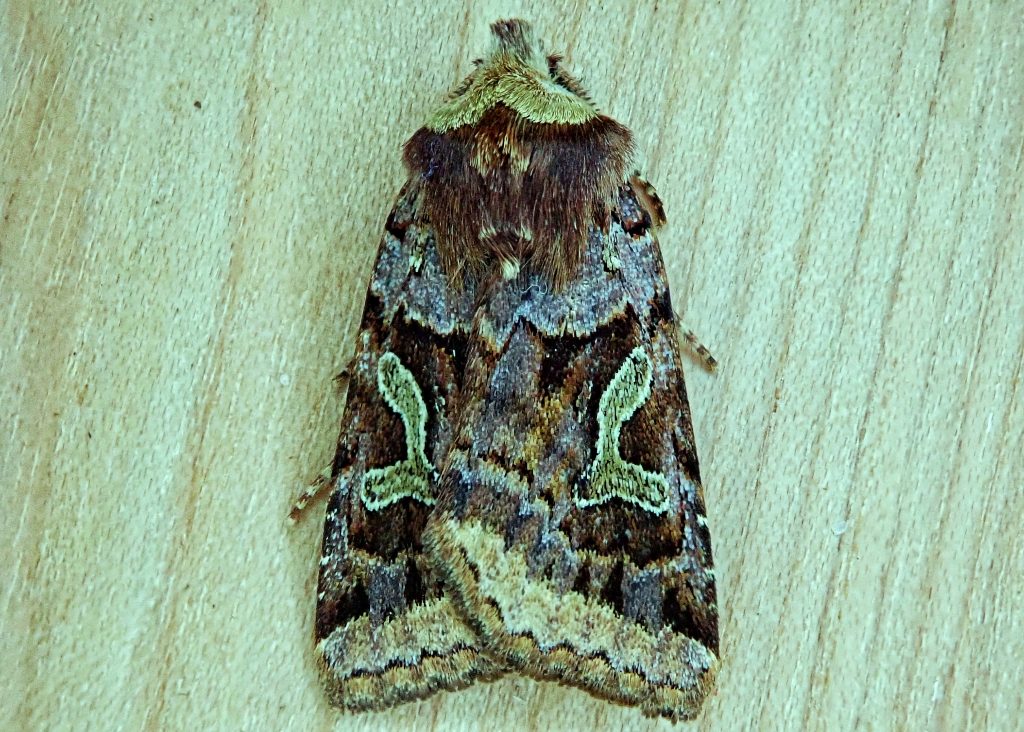
Cerastis enigmatica is a small but striking Noctuid that flies in early spring. It can be very common in areas with a lot of Salmonberry, it’s primary larval host, and I’ve had well over a dozen at my lights on several occasions. And they seem to be a bit of a bellwether, in that, if I’m getting a lot of Enigmatic Darts early in the evening, I’m probably going to see a lot of moths that night.
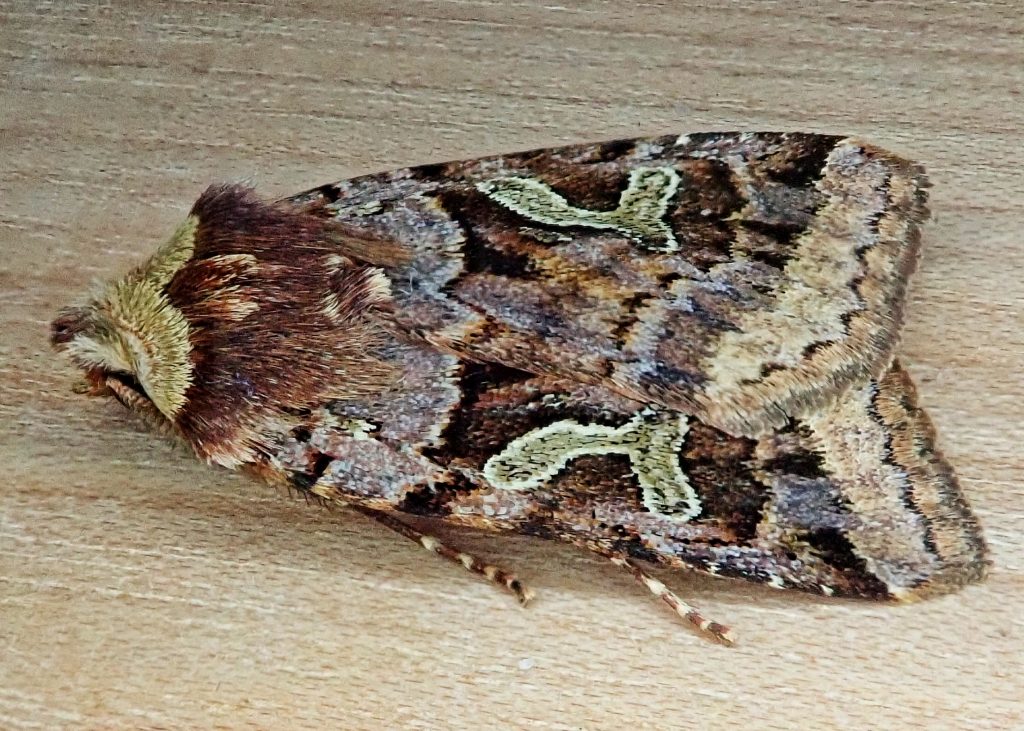
There is a fair amount of variation both in the extent and the shading of the large color blocks, but the overall pattern (maculation) is consistent. I’ve always thought the pentagonal thorax, with its long dark hairs on the rear and short tawny haired collar, was particularly handsome.
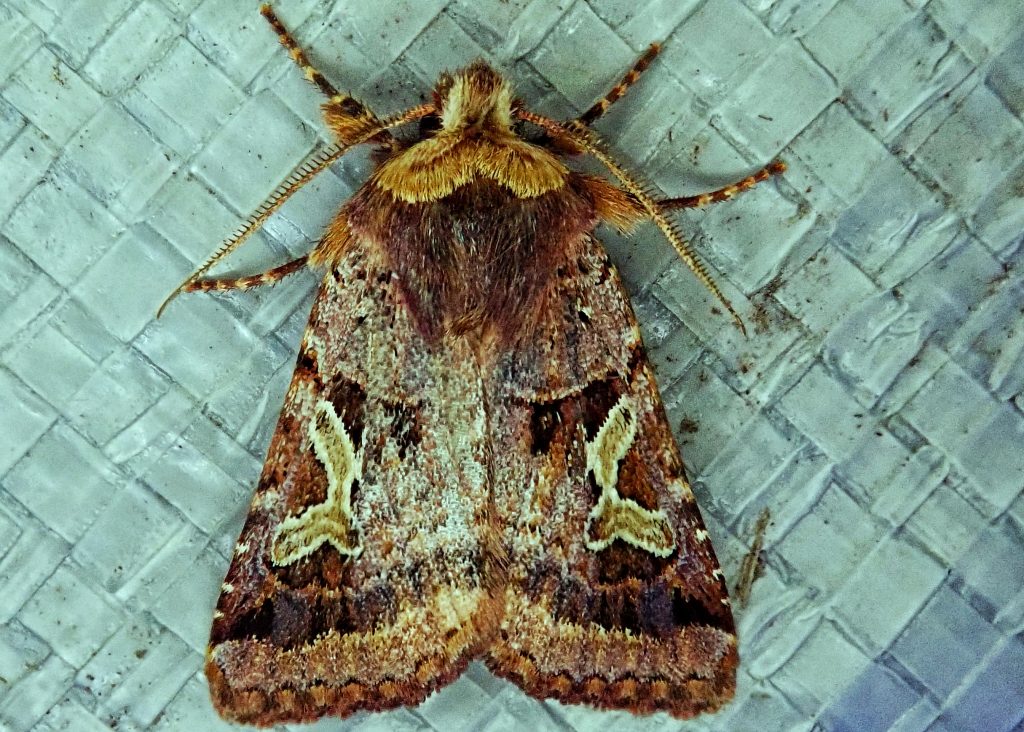
These moths aren’t what I would call settlers, because they are easily disturbed into flight, although some that park themselves near to the light do seem to be in a bit of thrall. But they seldom leave the light area, preferring to perch again nearby. They also have the regular habit, not unknown but unusual for most Noctuids in my experience, of perching on horizontal surfaces.
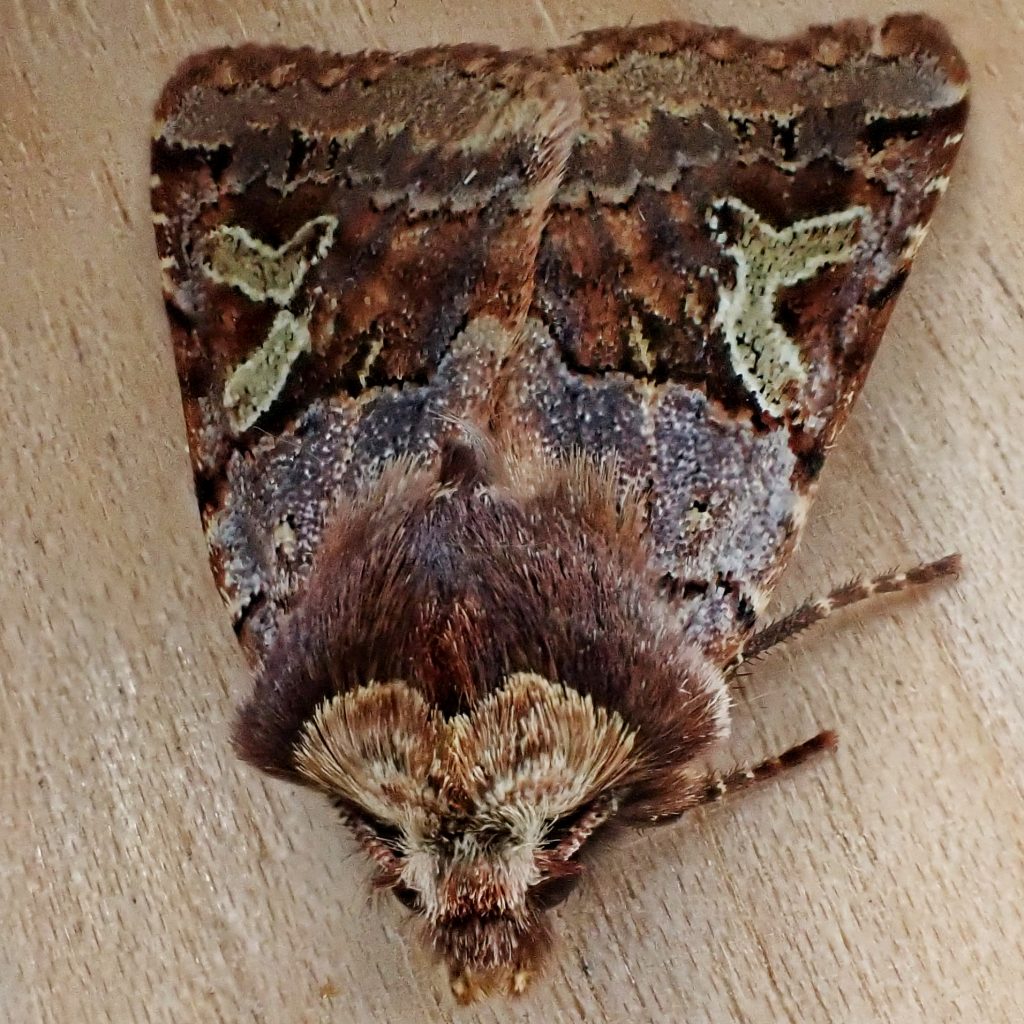
Description-Small to medium (fw length 13-15mm) sized brown, reddish brown and greyish brown moth with brown to yellow fused orbicular/reniform spots; the median area is usually the darkest color, and the area between the postmedial line and the margin is the lightest; the antemedial line is jagged, and the postmedial line is scalloped.
Similar species– Cerastis gloriosa is larger, has white orbicular/reniform spots, and is pinker.
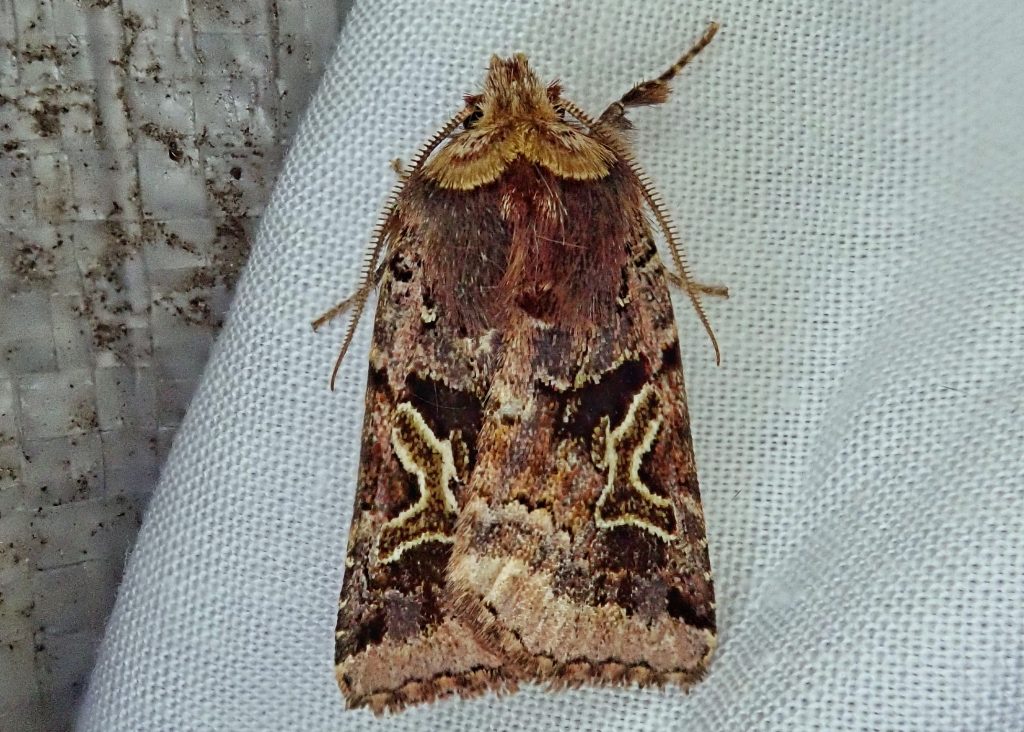
Habitat– Moist to mesic mixed forests up to middle elevations; also found in coniferous forests in the Cascades, and oak savanna in sw Oregon.
Range-West Coast endemic; found primarily west of the east slope of the Cascades in our region, as well as in nw California.
Eats– Salmonberry is the primary larval host, but other Rubus spp. may be used in more arid habitats.
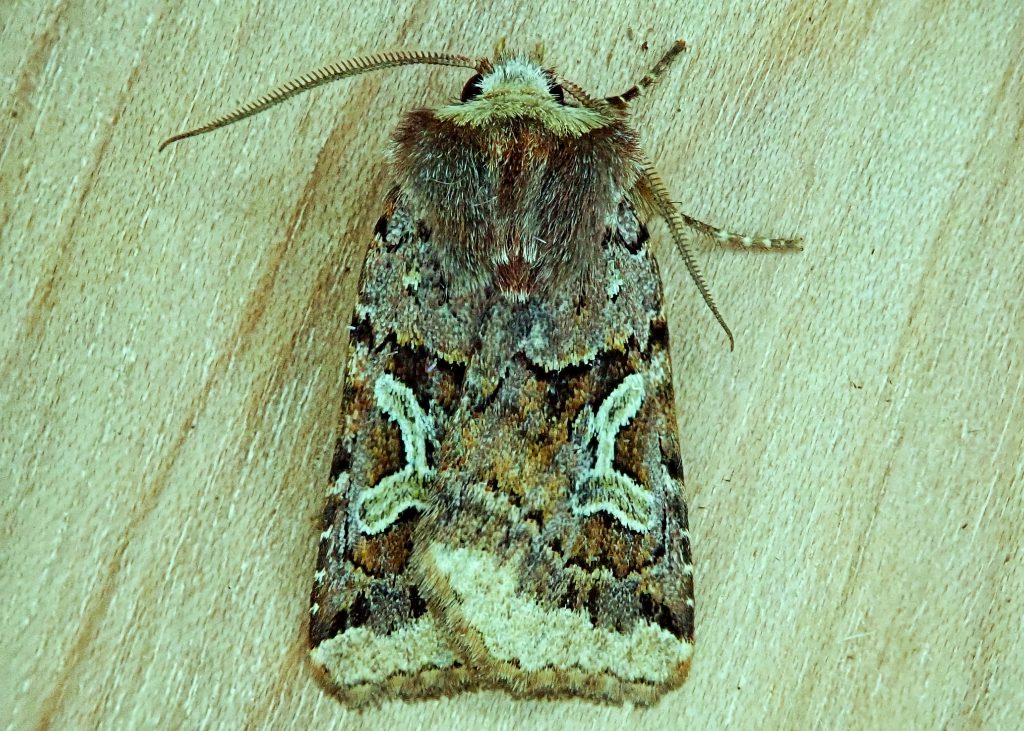
Reproduction– Single brood; overwinter as pupa.
Adults active– Late February to early May
Etymology of names–Cerastis means ‘horned’ in Greek and is an old name for the island of Cyprus. Apparently Ochsenheimer, the original describer of this genus, frequently used place names from Ancient Greece to name genera. According to Lars Crabo, the specific epithet enigmatica has to do with the fact that they were an enigma to taxonomists, because they had been lumped in with C. cornuta, but didn’t really fit, until Crabo and Lafontain revised the genus in 1997 and raised them to species status.
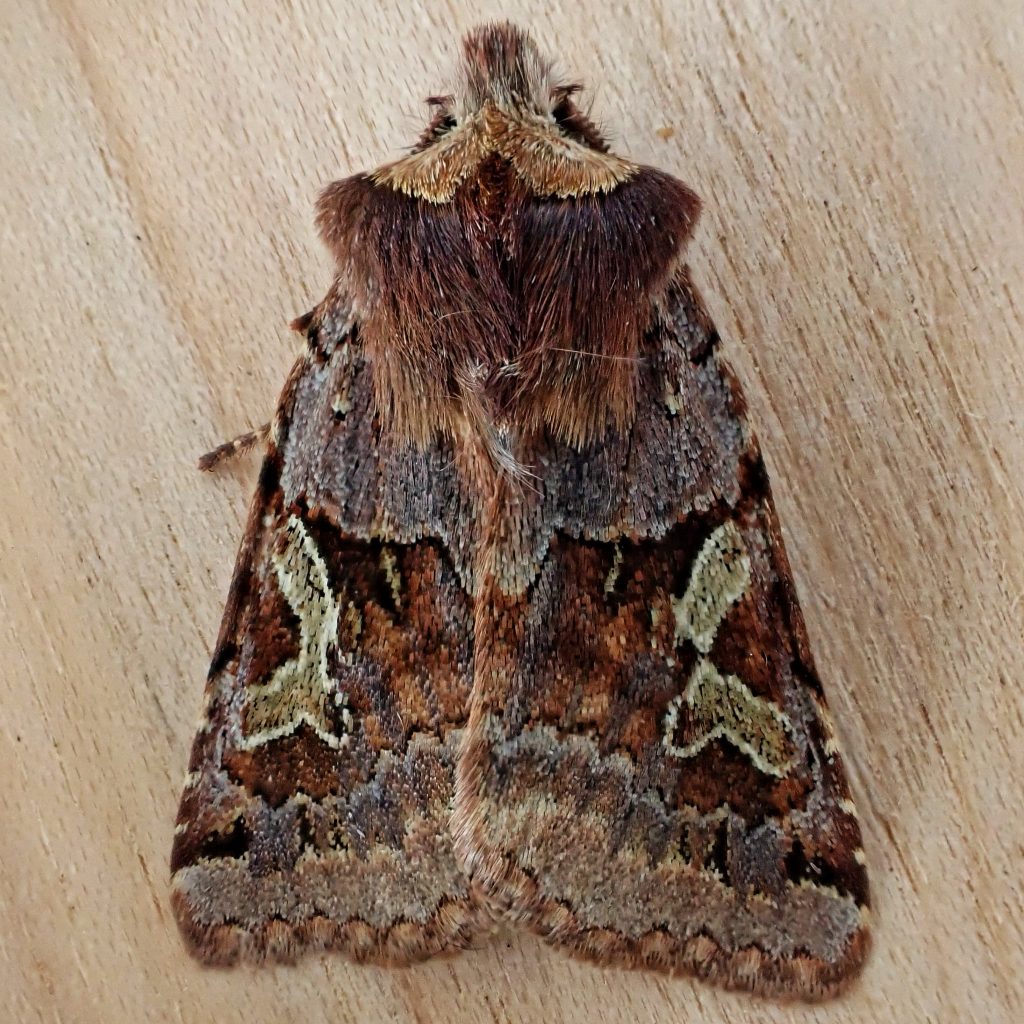
https://bugguide.net/node/view/49145
https://linnet.geog.ubc.ca/efauna/Atlas/Atlas.aspx?sciname=Cerastis%20enigmatica
Moth Photographers Group – Cerastis enigmatica – 10995.2
https://images.peabody.yale.edu/lepsoc/jls/1990s/1997/1997-51(3)237-Crabo.pdf
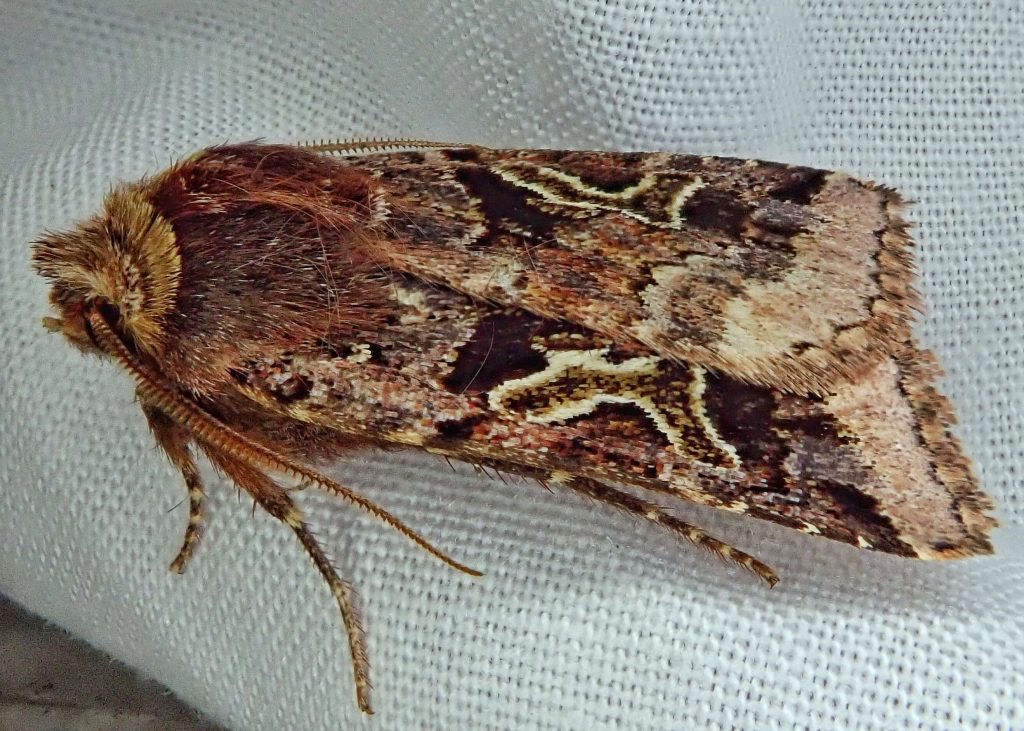
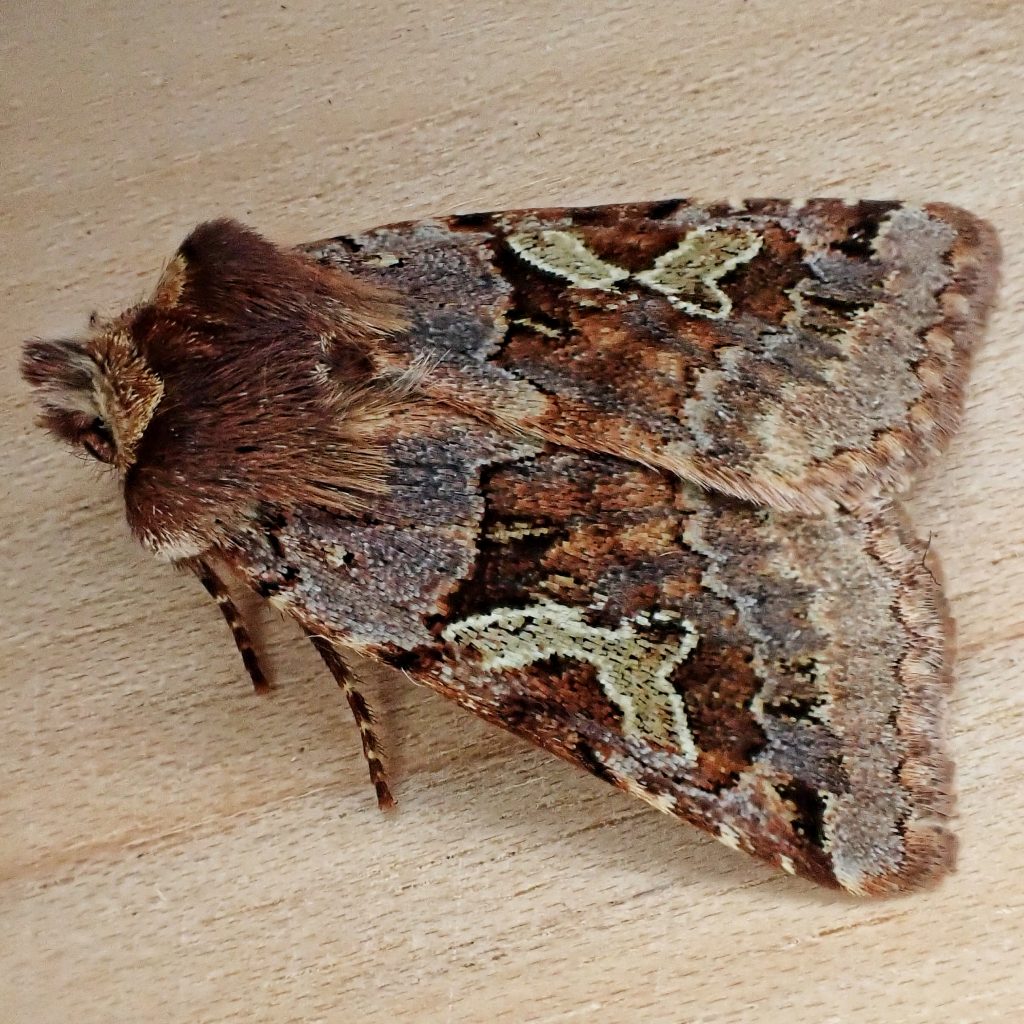
Beautifully symmetric, if not egnimatic 🙂